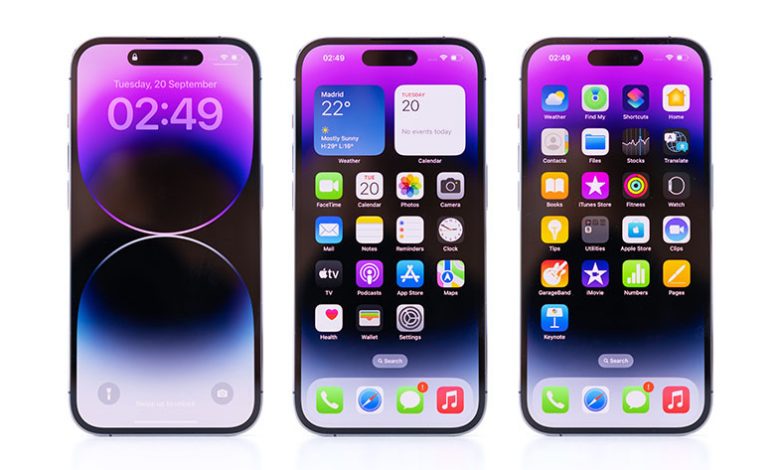
Table of Contents
Understanding the Evolution of Interactive Widgets
The evolution of widgets on iPhones and iPads has seen a significant shift with the emergence of iOS 17. Prior to this, widgets on these devices were static, merely providing displays of information without any form of user interaction. They provided data at a glance, but interaction was limited to opening the respective app.
Transition from static to interactive with iOS 17
However, with the launch of iOS 17, these widgets have undergone a remarkable transformation. They have evolved beyond being mere static display entities, to become actual interactive widgets. This means that they now not only provide information, but also allow for tap-based actions by users. This aspect has truly brought the widgets to life, making them a more integral part of the device use experience.
Promises to save time and provide more information
The interactive feature that has been introduced to widgets promises several benefits for users. One of the biggest advantages is the time efficiency they offer. With interactive widgets, users can now perform certain tasks directly from their home screen, without having to open the respective apps. These widgets also provide more information directly on the home screen, thereby saving the users' time in accessing the necessary data. It's a testament to how these new trends in technology continue to redefine our interactions and experiences with our own devices.
Steps to Add and Customize Widgets on iPhone and iPad
Adding and customizing widgets on your iOS device allows you to have instant access to chosen information directly on your Home Screen. Below are the steps for adding, organizing, moving, and customizing widgets on iPhone and iPad for a more personalized and efficient user experience.
Updating iPhone to iOS 17 and Adding a Widget
To integrate these interactive widgets, ensure your iPhone or iPad is updated to iOS 17. Then, press and hold a free space on your Home Screen until the icons start to jiggle. Tap the plus (+) icon located in the upper-left corner to access the Widget Menu. Search and select the widget that you want to add. Swipe to explore the widget's range of sizes and tap 'Add Widget' to finalize. Now, the selected widget will appear on your Home Screen, ready for interaction.
Organizing and Moving Widgets on Home Screen
To move a widget, press and hold an empty space on your Home Screen until the icons start jiggling. Press the widget until it becomes slightly bigger and drag it to your preferred location. To move it to a different Home Screen page, drag the widget to the screen's right edge until the other pages become visible and then drop it on the desired page. You can also resize a widget by dragging its corners while the icons are jiggling.
Tips for Moving and Organizing Widgets
Get more out of your Home Screen by organizing your widgets effectively. Group similar widgets together by dragging them on top of each other, creating a neat cluster. You can also create widget stacks by stacking one widget on top of another. This enables you to swipe through them and access different types of information from one spot on your Home Screen. To delete a widget, press and hold on it until the icons jiggle, and then tap the minus (-) sign.
Customizing Widget Appearance
Manage the aesthetic of your Home Screen by customizing the appearance of your widgets. Widgets can be tailored according to your preference by modifying their color, font, and other settings. This ensures a balanced and harmonious look and feel to your device's Home Screen.
How to Create, Interact with Widget Stacks
Enhance your Home Screen's functionality by creating widget stacks. This feature allows you to compile multiple widgets in one spot on your screen, offering a range of data at a single touch point. To interact with a widget stack, simply swipe through to switch between the different widgets in the stack, delivering diverse information without eating up your screen space.
Specific Widget Interactions
Interactive widgets offer a sea of convenience, allowing users to operate different apps directly from the Home Screen. These widgets offer quick access and interaction for a range of daily tasks, whether it's checking up weather forecast, playing music, or staying updated with latest news. Here's a look at the interactions with some specific widgets like Apple Music, Reminders, and others.
Interacting with Apple Music Widget
The Apple Music widget revolutionizes the way music is played and controlled on an iPhone or iPad. The widget displays album artwork and playback controls right on your Home Screen, eliminating the need to open the Music app for every interaction. This means you can easily play, pause, and skip tracks directly from your Home Screen. This enhances your overall music listening experience, making it convenient, effortless and quick.
Using Reminders Widget
The Reminders widget is your digital assistant. It displays upcoming tasks and to-do items from your Reminders app right on your Home Screen. It highlights urgent tasks, allowing you to tick them off as you complete them. This helps you in staying organized and on top of your pending tasks. This direct interaction with the widget makes it easy to quickly view your to-do list, update task status, and add new reminders without having to navigate beyond your Home Screen.
Interacting with Weather, News, Fitness, and Clock Widgets
Other popular interactive widgets include the Weather, News, Fitness, and Clock widgets. The Weather widget brings the forecast straight to your Home Screen, displaying the current weather conditions, and a short-term forecast. The News widget delivers latest headlines and snippets from your preferred news sources. The Fitness Widget displays your daily activity data at a glance while the Clock widget displays the current time and can also be used to set alarms or timers. Each of these widgets enhances the functionality and convenience of the Home Screen, providing a unique interactive experience with the device. With these, not only do you save time, but also have access to greater information at your fingertips, which you can interact with as part of your daily routines.
Using Widgets on iPad
Interactive widgets are not just restricted to iPhones; they have also been integrated into iPads. They work in a similar manner, offering iPad users the same functionality and ease of use.
Adding Interactive Widgets to iPad Home Screen
To add an interactive widget on your iPad, press and hold an empty space on your Home Screen until the icons start jiggling. Then, tap the plus (+) icon in the top-left corner. Now, you can search for the widget that you want to add. Click on the desired widget to select it, swipe to see the different sizes it comes in, and tap the size that suits your needs. Tapping 'Add Widget' will place it on your Home Screen. You can then tap it to interact with it and explore its features.
Adding and Interacting with Moving Widgets
To introduce a moving widget to your Home Screen, you have to choose a widget that supports this feature, like the Weather, Calendar, or News widget. After adding it, the widget can be moved around by dragging it to a new location. It can also be resized as per your preference by simply dragging its corners. Moving widgets enhance the visual appeal of your iPad and bring greater functionality to your Home Screen.
Similarities and Differences between Using Widgets on iPad and iPhone
While the process of adding and interacting with widgets is largely the same on both iPhone and iPad, subtle differences stem from device layouts and operations. For instance, due to the larger screen size, an iPad can accommodate more widgets in a single view than an iPhone. Nonetheless, they share many similarities, including the types of widgets available, the abilities to resize and move widgets, and the overall aim of improving user experience by providing quick access to useful information and app functionalities directly from the Home Screen.




